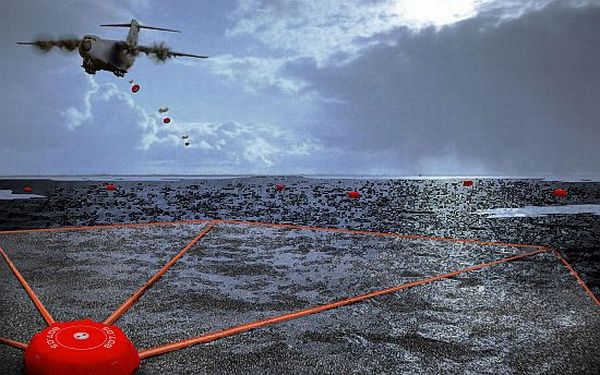
The year 2006 was full of oil spills as more than 3.5 billion gallons of oil was carelessly spilled across the oceans with only 60% reaching its final destination. However, improvised shipping designs and harsher penalties have reduced the instances of oil spills in the recent years although they still occur. Oil spills have resulted in major deaths of aquatic mammals and birds which are simply covered in oil. The oil spreads over water, making it impossible for oxygen to reach the sea animals. However, tankers are not the only ones responsible for oil spills as a lot of oil-related accidents occur at oil drilling rigs, refineries, underwater pipelines and coastal storage facilities as well. Cleaning up the millions of gallons of oil is a very daunting task; however, the brighter side to that is the possibility of removing the film of oil as oil does not mix with water causing long-term damage. If a cleaning crew can reach the site of an oil spill within 1-2 hours, then it becomes easier for them to control the damage. However, these situations are rare and oil accidents result in the tremendous damage to the environment. Here are some green methods in which oil spill can be cleared up:
1. Oil-eating AEROS robots
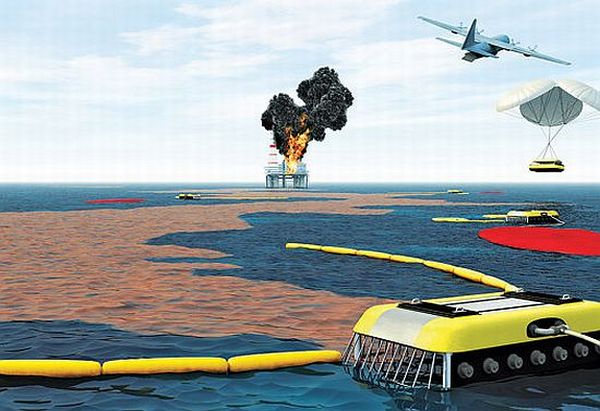
Many disastrous oil spills have led to the development of measures for tackling oil spills in the future. One of the proposals is a futuristic approach called the Airborne Robotic Oil Spill Recovery System (AEROS) in which robot are automated to clean oil spills in a few days by using centrifuge-like separators and the robots collect the oil inside of them while releasing the water. This oil can then be recycled. It is estimated that around 3000 gallons of oil can be cleaned within a minute by each robot.
2. Clams Clean Up Oil Spills
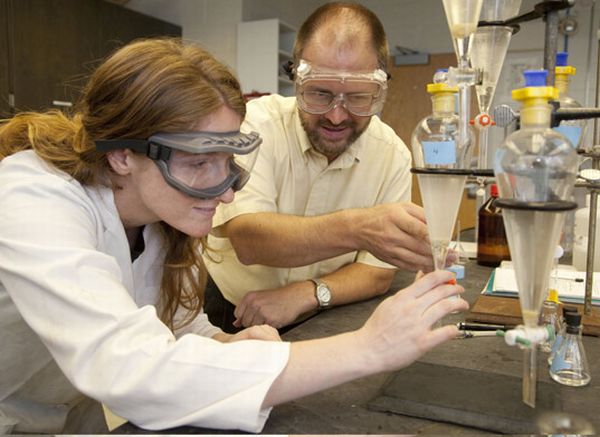
A research team of students and faculty at Southeastern Louisiana University have conducted a study in which the Rangia clam has been used for filtering oil from polluted water. Even though the clams are small in size, they have the capacity to consume and digest various kinds of viruses and bacteria and have the capacity to store high levels of hydrocarbons inside of them without harming their health. The project is still underway and could be a major breakthrough for getting rid of oil slicks in oceans.
3. Concept system to combat oil spills
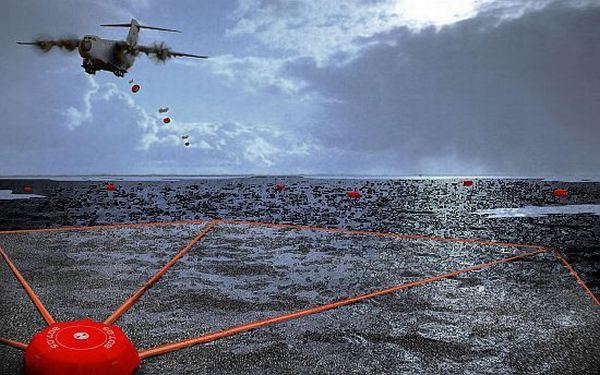
A lot of industrial designers are proposing robotic systems for cleaning the water by using buoys which can be deployed on the accident site via aircrafts. These buoys will then inflate and stretch out nets to soak in all the oil. After the oil sucking process is over, these buoys can then be airlifted back.
4. MIT solar powered robot
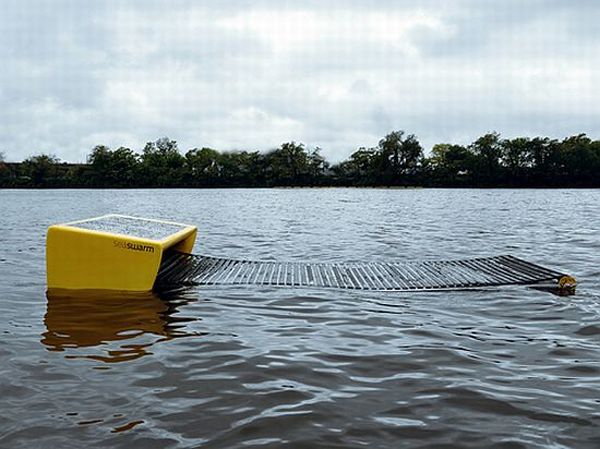
The Deepwater Horizon oil accident has led experts to come out with high-tech solutions for tackling such disasters. Researchers at the SENSEable City Lab of MIT have come out with a prototype by using their very own SeaSwarm Technology in which huge oil spills to the extent of the BP disaster can be contained in a single device and would cost $200. The technology uses robots that are 16ft in height who are equipped with a conveyor belt made out of nanowire mesh that would soak up the oil. Many of such robots would work by coordinating via wireless or GPS technology.
5. Purdue clean up oil spills
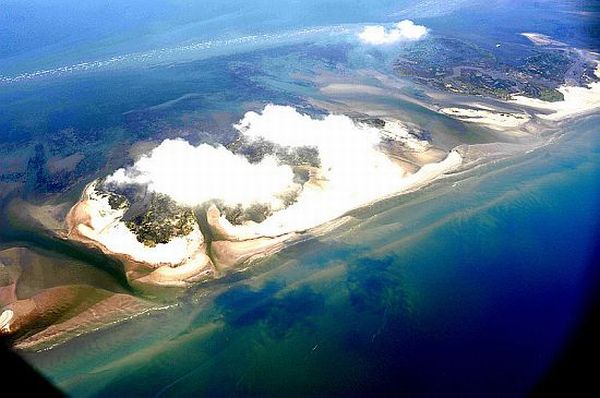
A few material engineers from Purdue University have devised a novel membrane that has the capacity to separate oil from water. This application could be used for cleaning oil spills as well as other functions such as water purification etc. After going through this filter, the oil that is mixed with water is then separated with 98% efficiency.
6. Oil eating robots
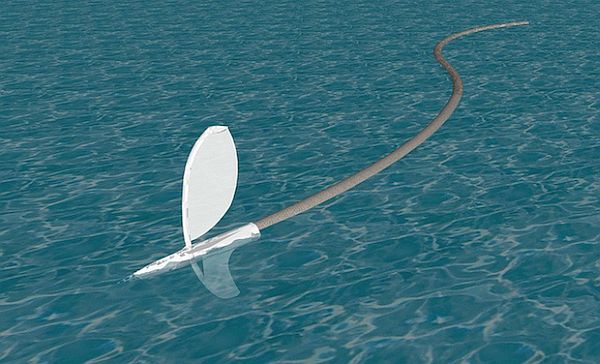
Protein oil spill cleaning drones are devices that could clean up the sea after an oil spill. Designed by Cesar Herada, the Protei is a drone that is capable of sailing into the sea along with a fleet in order to clean the oil spill by making use of detachable oil sucking boom that can contain around 2 tons per Protei drone. The Protei Drones are also capable of detecting other disasters such as meltdowns and can also collect plastic.
7. New improved technology to cleanup oil spill
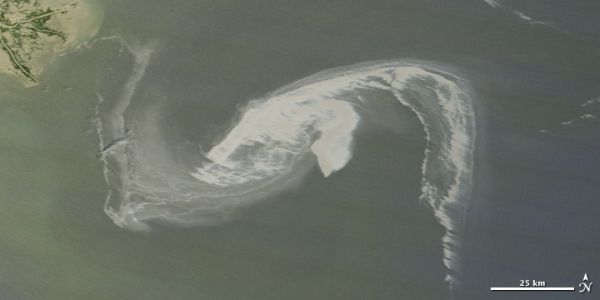
Oil spills cause a lot of damage to animals and birds, particularly when the oil covers the water surface. Scientists from the US have devised a new devise called the mechanical skimmer that makes use of an efficient technology for clearing out the water. However, two researchers from the University of California (Santa Barbara) have improvised on the mechanical skimmer by giving it an efficient grooved surface area that is used for picking out the oil which is 100% efficient in removing the oil.
8. Oil busting robots
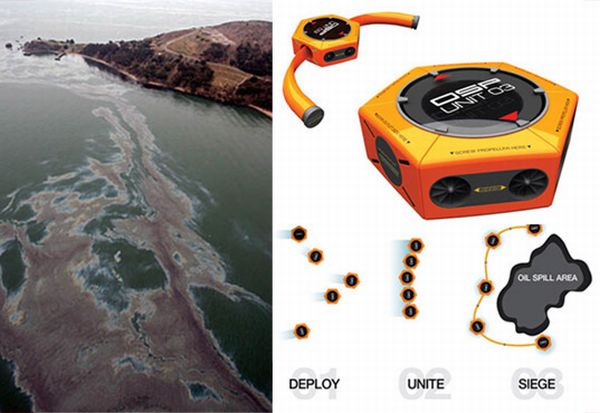
The OSP robot is an innovative solution to the devastating oil spills. High speed in getting the oil out from the water without spreading is a basic prerequisite for containing and tackling the problem and this is exactly what these robots do. Designed by Ji-hoon Kim, this set of oil sucking robots can be promptly taken to the site of the oil spill via boat or helicopter to start the clean-up process. The robots contain the oil by making use of an inflatable barrier and can reduce the damage done until other help teams arrive. The designer is also building these robots by using inbuilt solar panels.
9. The oil gulping sea monster
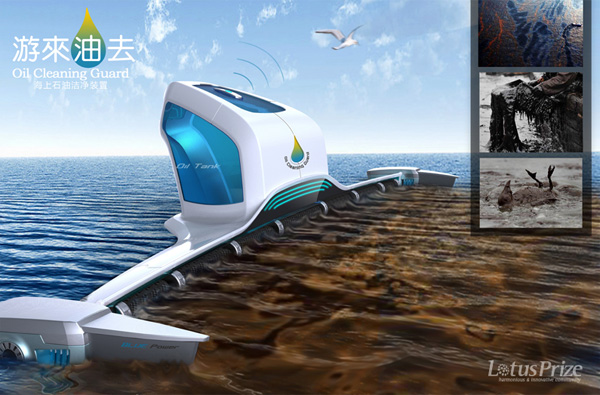
The oil gulping sea monster or the exclusive Oil Spilling Guard has been designed by Li Ran, Zhu Yi, Hu Tingting and Zhao Xiaoyang which will prove to be a path-breaking innovation for clearing oil spills. Since oil is denser than water, then it spreads is a fast speed in order to form a film over the sea surface – which hampers the supply of oxygen and sunlight for sea creatures to survive and can also lead to a huge ecological disaster. The function of the Oil Spilling Guard is to contain the spreading of the oil and to also filter it out from the water. This oil then is stored inside the tank of the Guard. The device also transmits SOS signals in case it finds that the fish and birds are in danger and therefore alerts officials to take speedy action.
10. Using hay to clean up oil spills
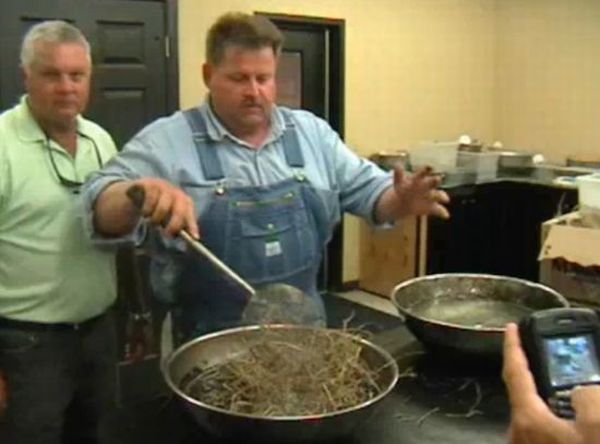
A lot of researchers are probing to discover some eco-friendly ways to clear oil spills and two men by the name of Darryl Carpenter (who is the VP of CW Roberts Contracting in Florida) and Otis Goodson (sub-contractor) have found out a simple method of removing the oil from water by using hay. The duo has discovered that if you place hay on top of the water containing the spillage, the hay automatically absorbs the water from the surface and clears it. The two have demonstrated their idea in the kitchen by using pans and will now move a step ahead and do it on a water body that extends up to 10 acres.


